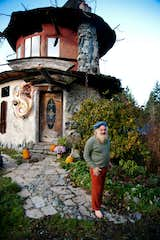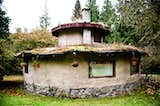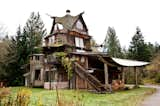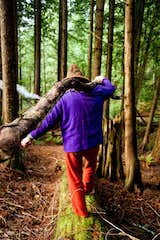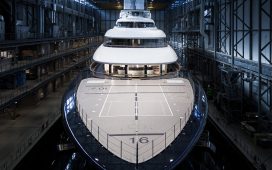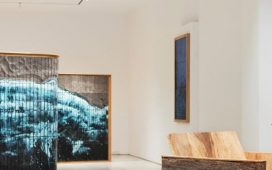As reported by The New York Times, legendary sculptor, builder, and designer SunRay Kelley died this month. He was 71.
If you’re unfamiliar with his work, which has been featured in the Times, on the Discovery channel, and in myriad blogs about off-grid living, you might start on his Instagram profile. There, you’ll learn that, for only $59,000, you, too, could own the first solar-electric “Gypsy Wagon”—a rebuilt 1982 Toyota Dolphin equipped with a hand-milled wooden rear cab. Outfitted with sleeping quarters, a gas stove, skylights, a refrigerator, and storage, the mobile tiny home resembles a vardo (a traditional Romani wagon), except for the truck hood poking out, which sports a 22R Toyota motor. One of Kelley’s fairytale-like creations, the wagon feels like a homegrown version of #VanLife.
In some ways, the wagon contrasts with his characteristic works of living, and livable, sculptures: Kelley was known for building fantastical shelters using found natural materials like cob, weathered timber, and boulders assembled into structures with fantastical shapes and forms, houses that seemed rooted in the land. Turrets and peaked roofs abound. Some like his Sky House could exist in a real-world Miyazaki set; others, like his cob and stone yurts, land like earthen spaceships.
“My goal is to restore the Garden of Eden,” he told Seattle news outlet KIRO 7 in 2018.
Seven of Kelley’s creations inhabit the nine acres in Sedro-Woolley, Washington, that he called “the shire,” but he also constructed nearly 70 structures across the United States and Central America, according to the Times obituary. The Forest House on Orcas Island, Washington, is a stunning example of his style and craftsmanship: Completed in 2002, it is partially a treehouse styled like a Leathers and Associates playground of the 1980s, with each living space an individual wooden yurt connected by an elevated, outdoor pathway. Lined with top cathedral windows of varying sizes and capped with convex skylights, it is a reminder that our greatest lifestyle luxury is the land around us.
Kelley didn’t consider his work buildings, however. “My architecture really is about raising human consciousness,” Kelley told KIRO 7. “I don’t really call them buildings anymore. They’re energy-generating machines that are like amplifiers.”
Top photo: Randy Harris/The New York Times/Redux

